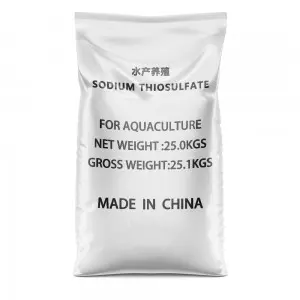



polyacrylamide for wastewater treatment
Polyacrylamide for Wastewater Treatment
In recent years, the management of wastewater has become a critical issue due to the increasing population and industrial activities leading to high levels of pollution. One of the effective materials used in wastewater treatment is polyacrylamide (PAM), a synthetic polymer that plays a vital role in various water treatment processes. This article delves into the properties, applications, benefits, and challenges of using polyacrylamide in wastewater treatment.
What is Polyacrylamide?
Polyacrylamide is a water-soluble polymer formed from acrylamide monomers. It is characterized by its long-chain structure, which allows it to absorb water and facilitate the separation of suspended solids from liquids. PAM exists in various forms, including anionic, cationic, and non-ionic types, each tailored to specific applications based on its charge properties and molecular weight.
Applications in Wastewater Treatment
Polyacrylamide is primarily utilized as a flocculant in wastewater treatment processes. Flocculation is the aggregation of fine particles into larger clusters, or flocs, which can be removed more efficiently from water. PAM enhances the settling rate of these flocs, improving the clarity of treated water. The polymer's effectiveness is evident in various treatment methods, such as
1. Municipal Wastewater Treatment PAM is commonly used to enhance the performance of primary and secondary treatment processes. It helps in the clarification of sewage and improves the efficiency of biological treatment systems by promoting the aggregation of activated sludge.
2. Industrial Wastewater Management Industries like mining, pulp and paper, and textile manufacturing produce wastewater laden with heavy metals, dyes, and other pollutants. Polyacrylamide is employed to aid in the coagulation and removal of these contaminants. Its application leads to improved compliance with regulatory discharge limits.
3. Sludge Dewatering In the sludge management process, PAM is instrumental in dewatering operations. It helps optimize the performance of centrifuges and belt filter presses by promoting the formation of larger flocs, resulting in reduced moisture content in the sludge and facilitating easier disposal or reuse.
Benefits of Using Polyacrylamide
The incorporation of polyacrylamide in wastewater treatment offers several advantages
polyacrylamide for wastewater treatment

- Enhanced Efficiency PAM significantly improves the efficiency of solid-liquid separation processes, making it easier to achieve clearer effluent and reducing the burden on subsequent treatment stages.
- Cost-Effectiveness By optimizing the dewatering process and enhancing floc formation, polyacrylamide reduces the overall costs associated with wastewater treatment, including energy and equipment maintenance.
- Versatility With different types available, PAM can be tailored to meet the specific requirements of various wastewater streams, addressing unique challenges posed by different industries.
- Environmental Compliance By helping industries meet stringent effluent standards, PAM contributes to improved environmental protection and sustainability.
Challenges and Considerations
Despite its benefits, the use of polyacrylamide in wastewater treatment is not without challenges. Here are some points to consider
- Toxicity Concerns The acrylamide monomer is classified as a potential neurotoxin and a suspected carcinogen. Therefore, proper handling and application are critical to mitigate any risks associated with its use.
- Environmental Impact The degradation products of PAM can pose environmental threats, and there are concerns about its persistence in the environment. Proper assessment of its long-term effects on ecosystems is essential.
- Cost of Raw Materials While PAM can reduce operational costs, the initial investment in the polymer itself can be substantial. This may deter small industries from utilizing this technology.
Conclusion
Polyacrylamide plays a crucial role in the advancement of wastewater treatment processes, offering enhanced efficiency, versatility, and cost-effectiveness. However, its application must be carefully managed to address toxicity and environmental impact concerns. Ongoing research and technological developments are essential to optimize the use of polyacrylamide in wastewater treatment, ensuring that it remains a viable solution for managing and mitigating water pollution in a sustainable manner. As the global demand for clean water increases, the role of polyacrylamide and similar innovative materials will be increasingly important in safeguarding our freshwater resources.
-
How and Why to Disinfect Water Softeners for Safe, Reliable WaterNewsNov.24,2025
-
Effective Deionized Water Disinfectant Solutions for Healthcare & Industrial UseNewsNov.24,2025
-
Commonly Used Disinfectant for Drinking Water – Global Uses & InnovationsNewsNov.23,2025
-
Chemical to Disinfect Water – Essential Solutions for Safe, Clean Drinking WaterNewsNov.23,2025
-
Blue Water Disinfectant: Safeguarding Global Water Quality with InnovationNewsNov.22,2025
-
Bleaching Powder for Water Disinfection – Affordable & Effective Water Treatment SolutionNewsNov.22,2025
-
Bleaching Powder Drinking Water: Effective, Affordable Disinfection WorldwideNewsNov.21,2025










